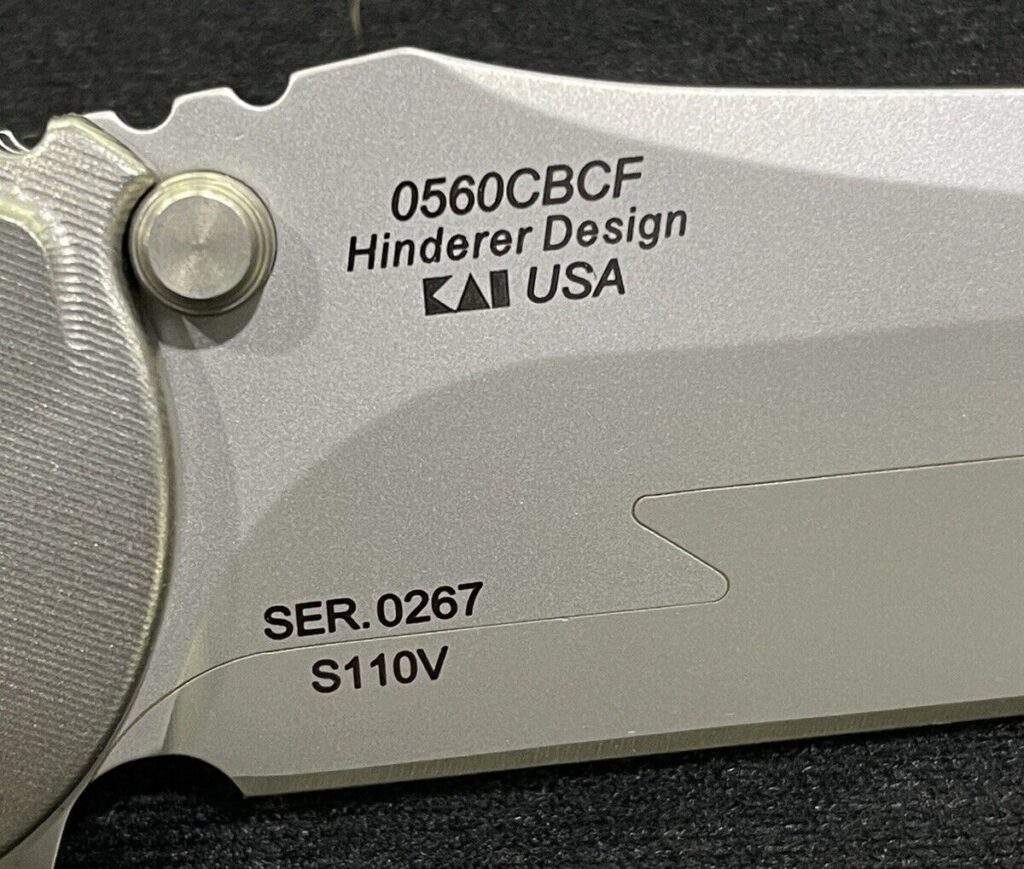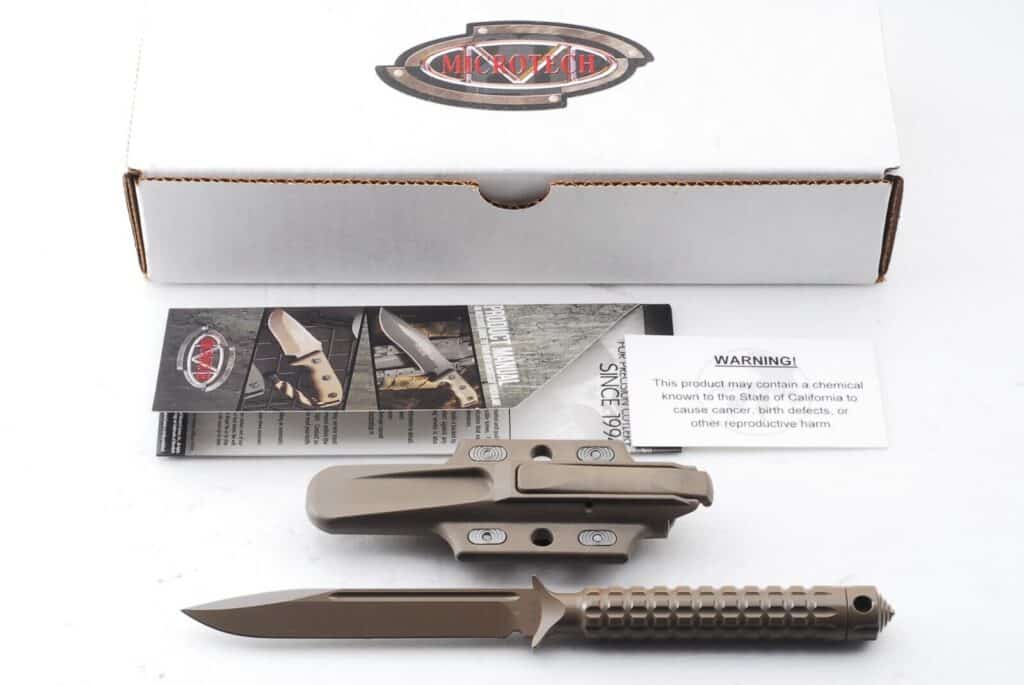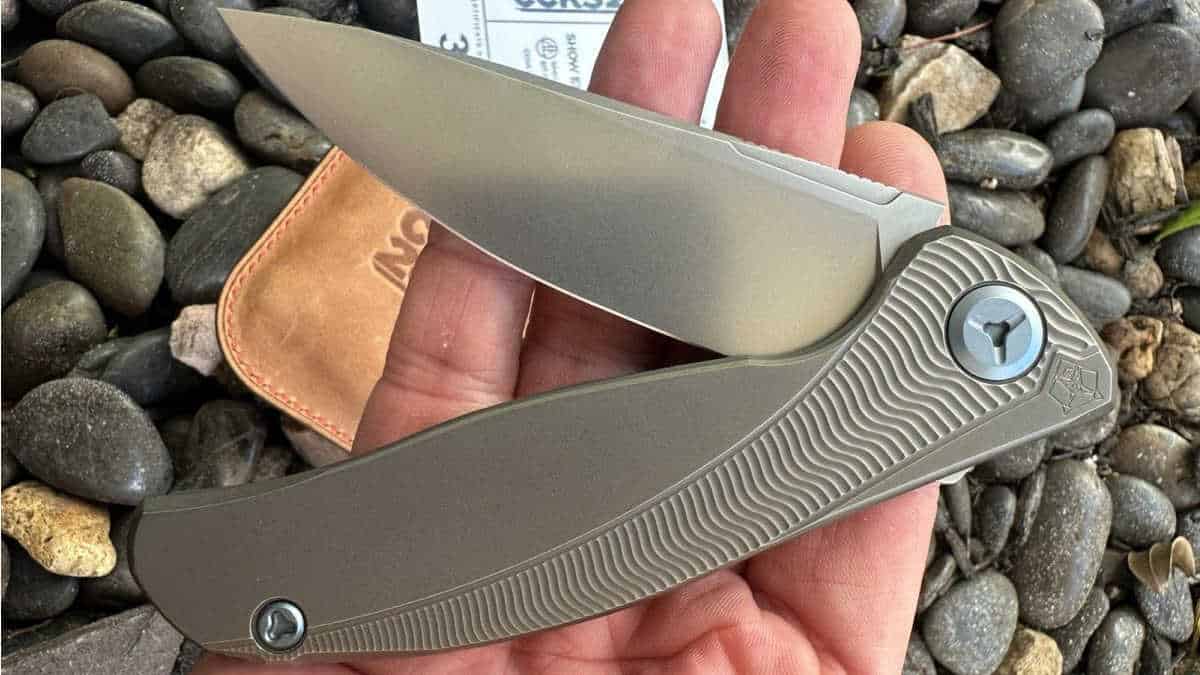As an Amazon Associate I earn from qualifying purchases.
Every kid has someone they want to impress and, for me, it was my uncle. He was old and crusty but he was also loud and opinionated so everyone wanted him to approve of what they were doing. It was just easier.
So when I got my first pocket knife, he was one of the first people I showed it to. He inspected it carefully before pushing it back to me and grunting, “Nice knife. You can tell a high-quality pocket knife by feeling alone.”
Obviously, I was impressed by his magical “feel”. Looking back, he was probably being unexpectedly generous about my little Swiss Army knife but it did put me on the path of trying to collect ever more “good” quality knives.
However, I’ve come to learn that it isn’t always as easy as just feeling a knife. Figuring out what makes a good pocket knife can be a bit difficult if you don’t want to use it for a couple of years before knowing.
So, if you’re trying to figure out if a pocked knife is good quality, this is the short mental checklist I go through. Hopefully, it’s helpful to you as well!
5 Hallmark Signs Of A Quality Knife
1. Materials (Frame, Blade, & Handles)

Quality materials are the cornerstone of any high-grade pocket knife.
The best materials are not only expensive to produce but can be difficult (and again, expensive) to work with.
Many high-end materials require proprietary milling or tempering techniques that companies who have the budget for such things design in-house.
Now this doesn’t only apply to the blade, but to the handle as well. A blade made from “better steel” will exhibit exceptional sharpness, edge retention, and corrosion resistance.
Best Quality Knife Steels
Now, there isn’t a “one-size-fits-all” answer here. Choosing the best steel for knife blades heavily depends on the purpose of the knife, as each type of steel has a unique set of characteristics, such as hardness, toughness, edge retention, corrosion resistance, and ease of sharpening.
However, if cost is no object, here are three highly regarded types of steel often used in high-end knives:
- CPM-S110V: This is considered one of the best knife steels for its incredible wear resistance and edge retention. It’s a high-alloy powder metallurgy stainless steel, which means it’s made using a process that results in a very fine, evenly distributed alloy mixture. This results in superior blade performance. However, it’s relatively hard to sharpen and doesn’t have the best toughness.
- M390 / CPM 20CV / CTS-204P: These three types of steel have similar compositions and are often compared to one another. They are considered “super steels” and are very popular in the high-end knife market. They provide excellent corrosion resistance and superb edge retention. Their wear resistance is also very high. However, like CPM-S110V, they can be more difficult to sharpen than other steels.
- CPM-3V: CPM-3V is a high-toughness, wear-resistant tool steel made by the Crucible Particle Metallurgy process. It is designed to provide excellent resistance to breakage and chipping in a high wear-resistance steel. It has a good balance between toughness and hardness, which makes it a good choice for knives that will see heavy, tough use. It’s not as corrosion-resistant as the other two, but it is easier to sharpen.
Common (Low Quality) Knife Steels
Lower-quality steels are often used in inexpensive, mass-produced pocket knives. While such knives can make fine tools, they’re not high on the “quality” list and most knife aficionados will recognize them quickly as a cheap knife.
Some steels that are commonly used in cheaper knives include:
- 420J2 Stainless Steel: This steel is very inexpensive to produce due to its lower carbon content. It is relatively soft compared to other knife steels, so it doesn’t hold an edge very well, but it is resistant to corrosion. It’s easy to sharpen but will require frequent re-sharpening with regular use.
- 3Cr13 Stainless Steel: This is a type of Chinese stainless steel that is similar in quality to 420J stainless steel. It’s known for its affordability and corrosion resistance. However, it doesn’t hold an edge very well and requires frequent sharpening.
- AUS-6 Steel: AUS-6 steel is a Japanese low-end stainless steel. It’s similar to 420J but of slightly higher quality. It’s decently tough and corrosion-resistant, but its edge retention is poor.
Handle Material
The handle material should also be durable, comfortable, and lightweight, such as G-10, titanium, or premium wood.
If you’re buying a knife and can’t tell what the scales are made out of, (and it doesn’t say on the box) then it’s safe to say that it’s probably not a very high-quality knife.
Cheap knives often use scales of steel, plastic, or faux wood.
However, remember, it’s not simply the materials that make the knife. It’s how they’re worked. Good quality knives will show exceptional attention to detail. This, at least, is somewhere where “feel” can help and you can only get the proper feel through experience!
2. Brand/Maker

While not an absolute rule, opting for a well-known and respected brand can be a reliable shorthand for quality.
Brands like Benchmade, Spyderco, Zero Tolerance, and Case have been in the business for years, perfecting their craft and consistently delivering high-quality products. They have built their reputation on the back of customer satisfaction, innovative designs, and superior craftsmanship.
However, brand should not be the only determining factor. It’s crucial to combine this with other indicators to ensure you’re getting a knife that offers the best value for your money.
3. Smooth Action
One of the places where build quality is most apparent in a knife is in the action. In this case, it refers to the detent, ease of deployment, lockup, and lock mechanism.
The materials used by the manufacturer and the tolerances to which they produce their knives will be the biggest influences on the action of the knife.
The action of a pocket knife refers to how smoothly it opens and closes. A high-quality pocket knife should have a smooth, effortless action, whether it’s a manual, assisted, or automatic model. It should open reliably every time, without needing excessive force or causing hand strain.
This is something that you can only tell by actually handling a knife but those who are experienced can make a guess by looking at the knife’s materials and construction. For example, a knife that uses ball bearings instead of copper/nylon spacer washes will be much more expensive but will exhibit a much cleaner and more pleasing action.
4. Centered Blade

A centered blade, when the knife is closed, is another subtle yet significant sign of a high-quality pocket knife. It should sit perfectly in the middle of the handle, not touching either side. This indicates precise assembly and well-balanced construction.
A non-centered blade can rub against the handle, causing premature wear or even blade damage. Moreover, a perfectly centered blade is aesthetically pleasing and is often a hallmark of attention to detail, a characteristic of high-quality pocket knives.
5. No Rattles
Finally, when you shake a closed high-quality pocket knife, it should be silent. Any rattling sounds could indicate loose components, which is a red flag. A well-constructed knife will have all its parts securely fitted together, ensuring not only silence but also enhanced durability and reliability.
The absence of rattles is a clear sign of meticulous craftsmanship and high-quality assembly.
Conclusion – Does It Really Matter?
My first knife (which I still have) is not really a high-quality knife. It is a mass-produced piece with plastic scales and a lame stainless steel blade that won’t hold an edge for more than a week.
However, I’ve used it for hours of whittling, cleaned tons of fish with it, chopped up apples at picnics, thrown it at trees when I felt like a ninja, etc.
Long story short, the fact that it isn’t really “quality” didn’t stop me from loving the knife and using it on and off for years.
If you have the pocket depth ($$$) and want a high-quality knife, however, the list above will point you in the right direction. However, I will say that, in general, the brand trumps everything else, and if you’re not well-informed about knife design and specifics you can’t really go wrong just buying a knife from a brand known for quality.
While high-quality pocket knives may come with a higher price tag, their superior performance, longevity, and reliability make them a worthwhile investment for any outdoor enthusiast, hobbyist, or professional requiring a dependable tool.
I will also say that the quality of a pocket knife is not only a reflection of its aesthetic appeal but is also intimately tied to its utility and durability. Good quality pocket knives are designed to withstand the test of time, resist corrosion, maintain their sharpness, and deliver consistent performance.
Ultimately, the pursuit of quality in a pocket knife is an affirmation of the user’s appreciation for superior craftsmanship, performance, and durability. In other words, owning a really high-quality knife is a purpose in and of itself.
The dudes standing around the work site won’t be impressed with your knife because it can do its job better…they’ll just appreciate that it’s high quality and that you dropped half a paycheck on it. Worth it? Probably.
Do Sheepsfoot Blades Have A Purpose? (Cuz They’re Ugly…)
Spetsnaz Machetes – Blades Of The Russian Special Forces
What Is The Actual Purpose Of A Spear Point Knife Blade?
CRKT CEO Review – Coolest, Most Worthless Knife Ever?
How Sharp Is A Scalpel? (Is It Sharper Than A Razor?)
Can You Shave With A Knife? (Yes, Here’s How)
As an Amazon Associate I earn from qualifying purchases.







